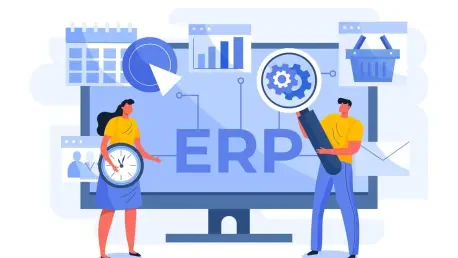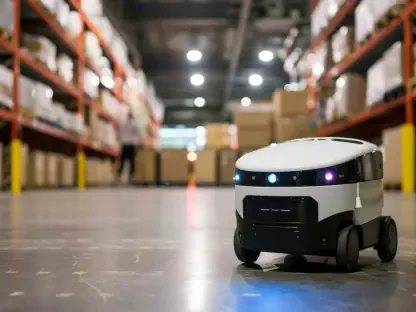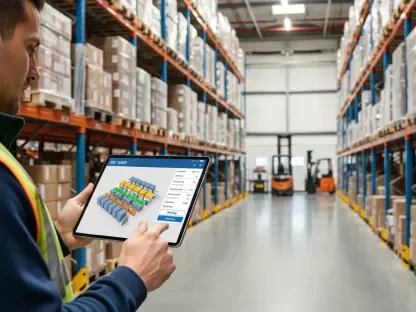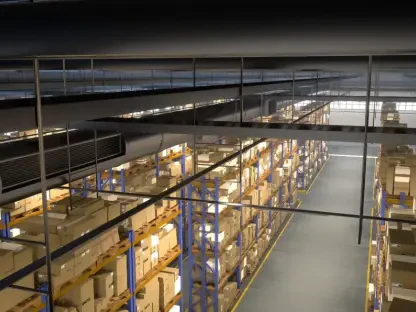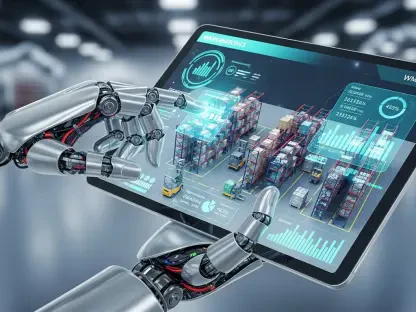Setting the Stage for Logistics Transformation
Imagine a logistics manager grappling with a sudden port strike, unable to track shipments or reroute deliveries, while consumer demands for same-day delivery continue to surge, creating immense pressure. This scenario is not a distant possibility but a daily reality for many in the distribution sector, where disruptions can cost millions in lost revenue. Enterprise Resource Planning (ERP) systems have emerged as a lifeline, promising to turn chaos into control by integrating data and automating processes across the supply chain. With the logistics industry facing unprecedented challenges like workforce shortages and volatile supply chains, the adoption of ERP technology is no longer optional but essential for survival. This review delves into how ERP systems are reshaping logistics, examining their core features, real-world impact, and potential to drive efficiency in an increasingly complex market.
Unpacking the Core Features of ERP in Logistics
Seamless Data Integration for Enhanced Visibility
ERP systems stand out for their ability to unify data from disparate departments, creating a single source of truth for logistics operations. By consolidating information from inventory, transportation, and customer service into intuitive dashboards, these platforms provide real-time insights that empower decision-makers to act swiftly. Whether it’s analyzing profitability or forecasting demand, the visibility offered by ERP ensures that businesses can anticipate issues before they escalate, a critical advantage in a sector where delays are costly.
This level of transparency also plays a pivotal role in crisis management. Industry reports, such as those from global consulting firms, indicate that companies leveraging integrated systems are significantly more likely to navigate disruptions effectively. For logistics managers, this means having the tools to monitor every link in the supply chain, from warehouse stock levels to delivery schedules, ensuring no detail is overlooked in high-pressure situations.
Automation as a Catalyst for Efficiency
Beyond data integration, ERP systems excel in automating repetitive tasks that often bog down logistics operations. Processes like inventory management, order processing, and transport coordination, once prone to human error, are streamlined through intelligent workflows embedded in modern platforms. This reduction in manual intervention not only minimizes mistakes but also accelerates turnaround times, allowing businesses to handle higher volumes with fewer resources.
The ripple effect of such automation is evident in operational cost savings and improved service delivery. For instance, automated order tracking reduces the need for constant manual updates, freeing up staff to focus on strategic priorities. In a sector with razor-thin profit margins, these efficiencies translate into a competitive edge, enabling firms to meet tight delivery windows without compromising accuracy.
Innovations Driving ERP Evolution
Transition to Cloud-Based and Modular Platforms
Modern ERP systems have undergone a significant transformation, moving away from the cumbersome, monolithic structures of the past to agile, cloud-based solutions. These newer platforms boast implementation timelines as short as 8 to 16 weeks, a stark contrast to the months or even years required previously. This shift makes ERP accessible to a broader range of businesses, including smaller distributors who cannot afford extended downtime during deployment.
The modular nature of contemporary ERP also allows for tailored adoption, where companies can select specific functionalities suited to their needs without overhauling entire systems. Coupled with cloud technology, this flexibility ensures that updates and scalability are managed seamlessly, keeping pace with the rapid changes in logistics demands. Such adaptability is crucial for firms aiming to stay ahead in a dynamic industry landscape.
Cutting-Edge Integrations and AI Capabilities
Innovation in ERP extends to integrations with complementary technologies like Transportation Management Systems (TMS) and Internet of Things (IoT) devices. Through API-driven connections, ERP platforms can synchronize with TMS to optimize delivery routes or link with IoT sensors in warehouses for real-time inventory updates. These integrations enhance operational precision, ensuring that every aspect of the supply chain operates in harmony.
Perhaps most transformative is the incorporation of artificial intelligence into ERP frameworks. AI-powered predictive analytics enable logistics firms to anticipate demand fluctuations or identify potential disruptions before they occur. This forward-looking capability fosters agility, allowing businesses to pivot strategies swiftly in response to market shifts, thereby maintaining continuity even under unpredictable conditions.
Real-World Impact in Distribution
Optimizing Operations with Tangible Results
The practical benefits of ERP systems are vividly illustrated in logistics subsectors like food distribution. A notable case involves a UK-based distributor that leveraged ERP-driven route optimization to cut carbon emissions by 14% annually. By analyzing traffic patterns and delivery schedules, the system identified more efficient paths, reducing fuel consumption while meeting stringent delivery timelines.
Such outcomes highlight ERP’s capacity to align operational goals with environmental responsibility. In retail distribution, similar implementations have enabled companies to manage peak seasons effectively, ensuring that inventory levels match consumer demand without overstocking. These real-world applications underscore the technology’s role as a strategic tool for balancing efficiency with broader business objectives.
Meeting E-Commerce and Personalization Demands
In the fast-paced world of e-commerce fulfillment, ERP systems are indispensable for meeting consumer expectations around speed and customization. With online shopping giants setting benchmarks for rapid delivery and tailored experiences, distributors rely on ERP to automate order processing and track shipments with precision. This capability ensures that customers receive accurate updates, enhancing satisfaction in a highly competitive market.
Moreover, ERP facilitates scenario modeling during supply chain disruptions, such as strikes or natural disasters. By simulating various outcomes, logistics managers can devise contingency plans, minimizing downtime and maintaining service levels. This adaptability is particularly vital in an era where consumer loyalty hinges on reliability and responsiveness.
Challenges Hindering ERP Adoption
Financial and Technical Barriers
Despite its advantages, implementing ERP systems comes with significant hurdles, starting with high initial costs. For many logistics firms, especially smaller players, the upfront investment in software, hardware, and customization can be daunting. Additionally, integrating ERP with existing legacy systems often presents technical complexities, requiring specialized expertise to avoid operational disruptions during the transition.
Staff training further complicates adoption, as employees must adapt to new workflows and interfaces. Without adequate support, resistance to change can undermine the system’s effectiveness, delaying the realization of benefits. These challenges necessitate careful planning and resource allocation to ensure a smooth rollout.
Regulatory and Market Constraints
Beyond internal obstacles, external factors like data privacy regulations pose risks to ERP deployment. Compliance with stringent standards requires robust security measures within the system to protect sensitive information, adding to implementation costs. Environmental regulations also demand that ERP solutions incorporate features for sustainability tracking, aligning with market expectations for greener practices.
To address these issues, vendors are increasingly offering scalable modules and enhanced support services to ease onboarding. Such initiatives aim to mitigate the financial and technical burdens, making ERP a viable option for diverse logistics entities. However, navigating regulatory landscapes remains an ongoing concern that requires continuous adaptation.
Verdict on ERP’s Role in Logistics
Reflecting on this evaluation, ERP systems prove to be a cornerstone technology that redefines logistics by tackling inefficiencies and fostering resilience. Their ability to integrate data, automate processes, and adapt to emerging trends like AI and sustainability positions them as indispensable tools for distributors navigating a turbulent market. While challenges such as cost and integration persist, the strides made in modular design and vendor support alleviate many adoption barriers.
Looking ahead, logistics firms should prioritize strategic partnerships with ERP providers to customize solutions that address specific operational pain points. Investing in comprehensive training programs will also ensure that staff can fully leverage the technology’s potential. As the industry continues to evolve, exploring ERP’s capacity for deeper AI integration and carbon accounting will be critical steps toward building a future-ready supply chain that balances profitability with environmental stewardship.
